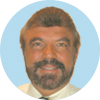The Nan Jing discussed a number of topics, including the "eight extraordinary meridians," the theory of the mother/son rule regarding tonification and sedation, the Luo points, and the meridians and points.
Previously, acupuncture pulse diagnosis was used at a variety of points, with most meridians having multiple pulse locations. A very little-known technique used in acupuncture, which developed within the first 400 years of the first millennium, was the stimulation of the related pulse points to affect the associated meridian.
Practitioners of acupuncture from the far Western provinces of China use this technique to generally affect the meridian channels. The points shown here are of historical significance, because it was at these points that acupuncture pulse diagnosis was originally used.
Should you have a difficult case in which you have properly ascertained which meridian is involved, use the points listed here, and you may find remarkable clinical response. Even though there is very little further information on this ancient system of healing, it definitely bears our attention.
Lung LU9 - LU5 - LU4, LU3 - LU2 - LU1
Large intestine LI4 - LI5 - ST4
Stomach ST5 - ST9 - ST30 - ST42
Spleen SP11 - SP12
Heart HT1 - HT3 - HT4
Small intestine SI16 - GB1
Bladder BL54
Kidney KI3 - KI9 - KI10
Pericardium P8
Triple heater GB2 - GB3
Gallbladder ST7 - GB2 - GB39
Liver ST9 - CV2 - LIV3 - LIV10 - LIV11
For those who are well versed at "therapy localization" a la AK, these points are very reactive for meridian examination. I am told by one of the masters I studied with in Western China, that some masters were known to dowse these points with a small piece of gold, malachite or jade attached to a leather string.
As you can see by the list of points, they are all, with the exception of a few, quite powerful. Try them on your next difficult case. You have nothing to lose and everything to gain.
John Amaro DC, FIAMA,Dipl.Ac(IAMA),Diplo.Ac.(NCCAOM)
Carefree, Arizona
">
Click here for previous articles by John Amaro, LAc, DC, Dipl. Ac.(NCCAOM), Dipl.Med.Ac.(IAMA).





